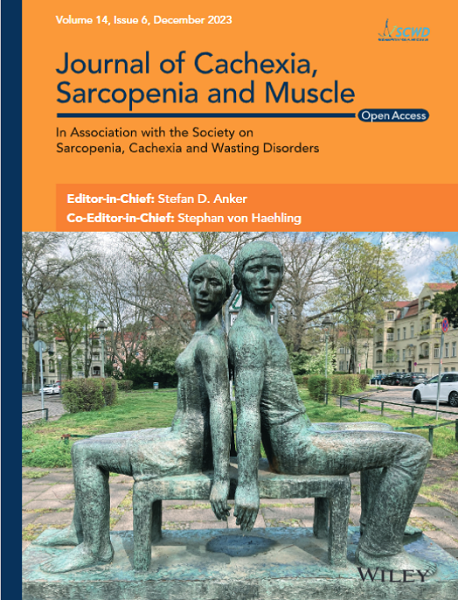Celecoxib Enhances Oxidative Muscle Fibre Formation and Improves Muscle Functions Through Prokr1 Activation in Mice
Abstract
Background
Muscle diseases are serious challenges to human health. Prokineticin receptor 1 (PROKR1) has emerged as a potential target to improve muscle function through increasing oxidative muscle fibres, but there are no clinically applicable synthetic PROKR1 agonists.
Methods
Drugs with biological properties of prokineticin 2 (PK2) were discovered through connectivity map (CMap) analysis. Their effects on PROKR1 were evaluated using molecular docking, PROKR1 signalling and competitive binding assays. Pregnant dams were fed diets containing varying celecoxib concentrations (0, 500, 1000 and 1500 ppm) from gestation day 5 through weaning. Offspring were given high-fat diets (HFD) from weaning until 20 weeks old, and body composition, insulin resistance, energy expenditure, exercise performance and histological analysis of muscle tissues were evaluated.
Results
Celecoxib, with a connectivity score of 64.19 to PK2 and a docking score of −9.0 to PROKR1, selectively activated Gs signalling at 4 μM of EC50 and increased NR4A2 protein levels by 1.6-fold (p < 0.01) in PROKR1-overexpressing cells. It competitively inhibited PK2 binding to PROKR1 and reduced cAMP accumulation. In murine and human myotubes, celecoxib increased Prokr1 protein levels by 1.8-fold (p < 0.05), pCreb by 1.5-fold (p < 0.05) and Nr4a2 by 1.3-fold (p < 0.05). It also elevated Myh7 index by 2.2-fold (p < 0.0001), mitochondrial content by 1.6-fold (p < 0.001) and fatty acid oxidation (FAO) activity by 4.1-fold (p < 0.05). Offspring exposed to celecoxib during pre- and postnatal muscle development exhibited activated Prokr1 signalling, enhanced oxidative muscle fibre formation and improved muscle phenotype despite HFD. At weaning, both male and female offspring showed dose-dependent increases in lean mass (> 9.35%, p < 0.001) and grip strength (< 18.0%, p < 0.01). At 12 weeks old, mice displayed a dose-dependent decrease in weight loss (> 13.3%, p < 0.05), increased lean mass (> 16.2%, p < 0.05), improved insulin resistance (> 70.4%, p < 0.0001), energy expenditure (> 173%, p < 0.0001) and grip strength (> 23.5%, p < 0.001). Celecoxib also increased Myh7-positive muscle fibre composition (> 10.8%, p < 0.05) and mitochondrial mass (> 32.8%, p < 0.05) in the gastrocnemius and soleus muscles, accompanied by significant Prokr1 signalling activation. These effects persisted in both male and female mice at 20 weeks old.
Conclusions
Celecoxib shows promise as a PROKR1 agonist and clinically applicable exercise mimetic for the treatment of muscular disorders.


 求助内容:
求助内容: 应助结果提醒方式:
应助结果提醒方式:


